Takeaways:
- Crabapple trees offer aesthetic appeal with their stunning springtime blossoms and colorful fruit, making them captivating focal points in gardens.
- They attract wildlife such as birds, bees, and butterflies, contributing to biodiversity and supporting pollinator conservation efforts.
- Modern varieties of crabapple trees require low maintenance, with improved disease resistance and minimal pruning and watering needs.
- However, crabapple trees are susceptible to diseases and pests, so selecting disease-resistant cultivars is crucial for tree health. Additionally, the fruit litter can be seen as a challenge, but proactive maintenance and managing wildlife attraction can help mitigate these issues.
| Pros of Crabapple Trees | Cons of Crabapple Trees |
|---|---|
| Variety in Colors and Forms | Susceptibility to Diseases |
| Adaptability to Drought | Root Suckering |
| Seasonal Interest | Messy Fruit Drop |
| Benefits to Wildlife | Obstructed Views |
| Fragrant Blossoms | Limited Drought Tolerance in Early Stages |
| Variety in Sizes | Attracts Unwanted Wildlife |
| Attractive Fall Foliage | Space Requirements |
| Low Maintenance Once Established | Seasonal Allergies |
| Disease-Resistant Varieties Available | Risk of Overgrowth |
| Enhances Property Value | Limited Lifespan |
Pros of Crabapple Trees
- Variety in Colors and Forms: Crabapple trees offer a stunning range of colors and forms, making them highly desirable for landscaping and garden aesthetics. Whether you prefer pink, white, or red blossoms, crabapples have a color to suit any preference. Moreover, their varying forms, from weeping to upright, allow for diverse design choices in gardens and parks.
- Adaptability to Drought: Once established, crabapple trees show a commendable tolerance to brief periods of drought. This adaptability makes them suitable for a variety of climates and reduces the need for constant watering, benefiting regions with water scarcity or those looking to conserve water in gardening practices.
- Seasonal Interest: Crabapple trees provide year-round visual interest, making them a valuable addition to any landscape. In spring, they burst into a profusion of blossoms, while in fall, their foliage turns into attractive hues. Even in winter, the silhouette of their branches adds a distinct charm to the landscape.
- Benefits to Wildlife: These trees offer significant benefits to wildlife, especially during spring and summer. Their blossoms are a source of nectar for bees and other pollinators, while birds often feed on the crabapples in autumn, providing an essential food source for local wildlife.
- Fragrant Blossoms: Many crabapple varieties emit a delightful fragrance, ranging from traditional apple blossom scents to exotic Oriental fragrances like cinnamon or cloves. This feature enhances the sensory appeal of gardens and public spaces, making them more inviting and pleasant.
- Variety in Sizes: Crabapple trees come in different sizes, from small, compact forms to larger, more imposing varieties. This versatility allows them to fit into various landscape designs, from small urban gardens to larger park settings.
- Attractive Fall Foliage: Apart from their spring blossoms, crabapple trees also boast stunning fall foliage. The leaves often turn into vibrant shades of yellow, orange, or red, adding a spectacular burst of color to the autumn landscape.
- Low Maintenance Once Established: After the initial establishment period, crabapple trees require relatively low maintenance. This characteristic makes them a practical choice for both amateur and professional gardeners.
- Disease-Resistant Varieties Available: While some crabapples are susceptible to diseases, many modern cultivars have been bred for improved disease resistance. This development allows gardeners to enjoy the beauty of crabapples without the high risk of disease-related issues.
- Enhances Property Value: The aesthetic appeal of crabapple trees, with their seasonal changes and beautiful blossoms, can significantly enhance the curb appeal and overall value of a property. They contribute to a well-landsc
caped, attractive home environment, appealing to both residents and potential buyers.
Cons of Crabapple Trees
- Susceptibility to Diseases: Crabapple trees can be prone to diseases such as apple scab and are also a target for pests like the Japanese beetle. These issues can lead to defoliation and overall decline in the tree’s health, requiring regular monitoring and potentially costly treatment methods to keep the tree healthy.
- Root Suckering: Crabapple trees can develop suckers from their trunk base, which can become a nuisance in landscaped areas. These suckers detract from the tree’s appearance and require regular pruning to manage, adding to the maintenance workload.
- Messy Fruit Drop: In early spring, crabapple trees can shed their fruit, creating a messy and potentially slippery situation underneath the tree. This can be particularly problematic on walkways, driveways, and lawns, requiring regular cleanup efforts to maintain a tidy appearance.
- Obstructed Views: Low-branched crabapple trees can obstruct views, especially when planted too close to buildings or in small yards. They can block natural light and interfere with scenic vistas, requiring careful placement and regular pruning to manage their growth.
- Limited Drought Tolerance in Early Stages: While mature crabapple trees are drought-tolerant, young trees require consistent watering to establish. This can be a drawback in areas with water restrictions or for gardeners seeking low-maintenance, drought-tolerant plants from the outset.
- Attracts Unwanted Wildlife: While beneficial to birds and pollinators, the fruit of crabapple trees can also attract unwanted wildlife like rodents or wasps, especially once the fruit begins to ferment on the ground. This can create a nuisance and potential health hazard in residential areas.
- Space Requirements: Crabapple trees, particularly the larger varieties, require a significant amount of space to grow. This can be a limitation in smaller gardens or urban spaces, where planting large trees is not feasible.
- Seasonal Allergies: For people with certain allergies, the pollen from crabapple blossoms can trigger allergic reactions in spring. This can be a significant downside for allergy sufferers, limiting their enjoyment of outdoor spaces during the blooming period.
- Risk of Overgrowth: Without regular pruning, crabapple trees can become overgrown, leading to a cluttered and unkempt appearance. Overgrowth can also lead to reduced air circulation and sunlight penetration within the tree, increasing the risk of disease and pest infestation.
- Limited Lifespan: Compared to some other tree species, crabapple trees have a relatively limited lifespan. This means they may need to be replaced more frequently, which can be a consideration for long-term landscaping plans and budgeting.
Aesthetic Appeal
Crabapple trees, with their spectacular blossoms and vibrant fruits, offer a multifaceted aesthetic appeal that can enhance any landscape. These ornamental trees are celebrated for their stunning floral displays, which bloom in a variety of shades, ranging from delicate pinks to bold reds. As captivating focal points, they contribute significantly to the garden’s visual interest, especially in the spring when the blossoms are in full display.
The aesthetic contribution of crabapple trees extends into the fall season. The trees bear colorful fruit that not only adds to the visual charm but also invites an array of wildlife, enriching the garden’s biodiversity. Birds, in particular, are drawn to the trees for the fruit, providing a valuable food source during the colder months.
Crabapple trees are available in diverse varieties, each offering its unique flower color and tree form, thereby enhancing the garden’s diversity. The development of compact and dwarf sizes has made it possible for these trees to be integrated into smaller yards and urban spaces, ensuring that even the most limited areas can benefit from their beauty. Moreover, the distinctive branch patterns of crabapple trees become prominent in winter, continuing to provide aesthetic interest throughout the year.
Wildlife Attraction

Attracting an array of wildlife, from cardinals and cedar waxwings to bees and butterflies, crabapple trees serve as a vital food source and contribute to the local ecosystem’s biodiversity. These trees are not merely decorative; they play a crucial role in sustaining various species. Birds like robins relish the fruits, while pollinators, such as bees and butterflies, are drawn to the blossoms. This cross-visitation among flora and fauna underlines the importance of crabapple trees in pollinator conservation efforts.
However, the relationship between crabapple trees and wildlife is not without its complexities. The fallen fruit and debris necessitate regular cleanup, which can be seen as a chore by some homeowners. Yet, this organic litter provides an additional food source for ground-feeding creatures, turning a potential nuisance into an ecological boon.
Therefore, while the maintenance associated with crabapple trees might deter some, the advantage of supporting a diverse wildlife population is an invaluable asset. The presence of these trees can foster a thriving and robust local ecosystem, making them a significant addition to any landscape that prioritizes natural harmony and environmental stewardship.
Low Maintenance Needs
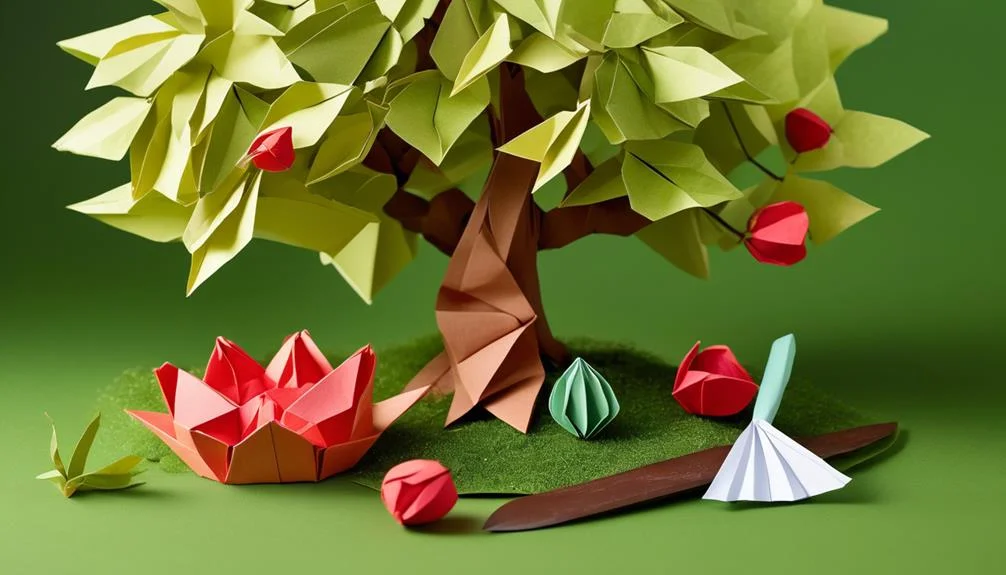
For homeowners seeking a balance between beauty and ease of care, modern varieties of crabapple trees offer improved disease resistance, ensuring they meet low-maintenance landscaping demands. These robust varieties have been selectively bred to withstand common ailments that typically plague crabapple species, thus requiring less intervention from the gardener. This innate resilience is a compelling feature for those who appreciate the aesthetic value of these trees but have limited time or desire to engage in extensive yard work.
Once established, crabapple trees become stalwarts in the garden, asking for little beyond the occasional pruning and watering during extreme droughts. The availability of compact and dwarf sizes allows for a versatile application in a range of environments, from spacious rural landscapes to tighter urban settings. The smaller stature of these variants translates to reduced maintenance, a prized characteristic for gardeners contending with the constraints of smaller plots.
However, it’s essential to note that ‘low-maintenance’ does not equate to ‘no maintenance.’ Regular monitoring is still advisable to ensure the tree’s health and vitality. Optimal care includes timely pruning to shape the tree and remove any dead or diseased wood, as well as keeping an eye out for signs of stress or infection. By selecting disease-resistant varieties and practicing basic care, homeowners can enjoy the enduring charm of crabapple trees with minimal effort.
Disease and Pests
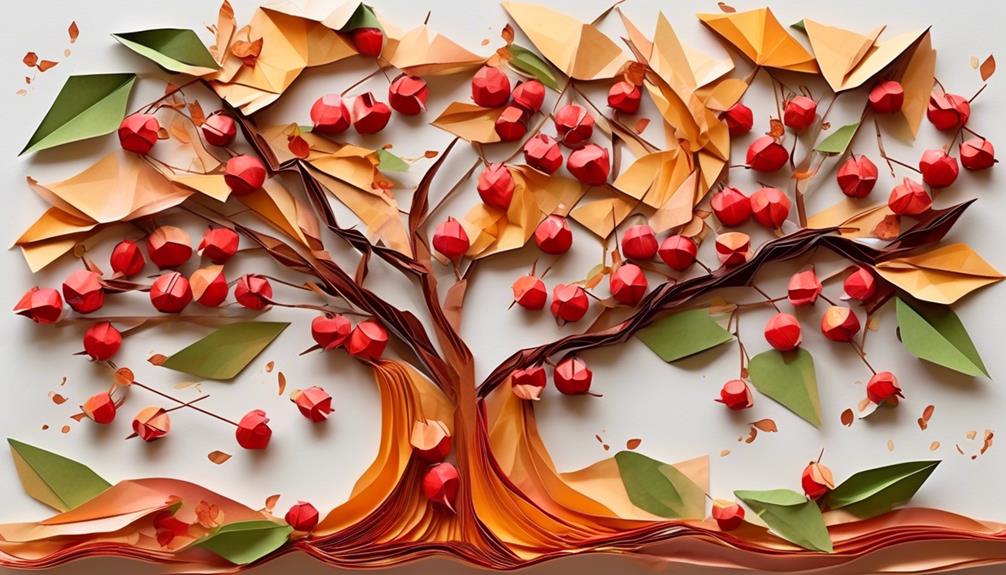
While crabapple trees are celebrated for their ornamental value, they are not without their challenges, particularly when it comes to diseases and pests.
Common ailments like apple scab and fire blight can mar the beauty and health of these trees, and infestations by pests such as aphids and apple maggots may further complicate their care.
It is crucial for gardeners to select disease-resistant cultivars and to be vigilant in their maintenance practices to ensure the vitality of their crabapple trees.
Common Crabapple Diseases
Crabapple trees, though adorned with stunning blossoms, can fall prey to a variety of diseases and pests that threaten their health and vitality. Selecting modern varieties with improved disease resistance is crucial for maintaining their beauty and longevity.
Snowdrift and Prairifire crabapples, for instance, show strong resistance against cedar apple rust and powdery mildew, common ailments that can mar their appearance and weaken their structure.
For robust defense against a wider range of threats, including fireblight and apple scab, gardeners might opt for the Sargent crabapple or the Sugar Tyme® variant. Royal Raindrops and Prairifire are particularly adept at avoiding apple scab issues.
It’s advisable to choose disease-resistant crabapple trees based on the diseases prevalent in your specific region to ensure optimal tree health.
Pest Vulnerability Concerns
Despite their enchanting beauty, crabapple trees are not immune to the relentless challenges posed by pests and diseases, which can compromise their health and diminish their ornamental value. To maintain the integrity of these trees, it is crucial to be aware of the following threats:
- Diseases like apple scab, fire blight, and powdery mildew can mar the foliage and fruit, affecting aesthetic appeal.
- Pests such as aphids, caterpillars, and apple maggots can cause significant damage, leading to a decline in tree vitality.
- Certain crabapple cultivars may exhibit increased susceptibility to particular diseases and pests.
Proactive maintenance and vigilant care are key to preventing and managing these issues. Opting for disease-resistant varieties and practicing good cultural habits can greatly reduce the risk of pest and disease problems.
Fruit Litter Challenges
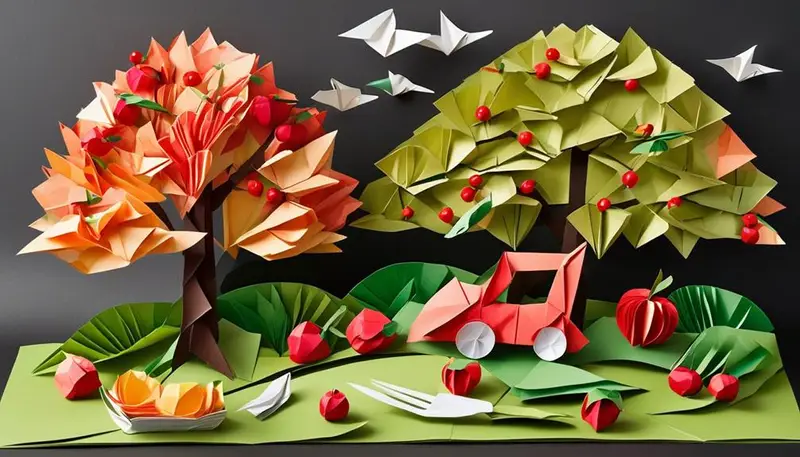
Although crabapple trees are known for their ornamental beauty, homeowners must contend with the regular cleanup required due to the messy fruit drop. Crabapple trees, while smaller than many fruit-bearing counterparts, still produce a considerable amount of fruit which eventually falls to the ground. This fallen fruit can create an unsightly mess that requires consistent maintenance, especially in residential areas where aesthetics are valued.
Homeowners should thoughtfully consider the placement of crabapple trees on their property. If trees are located near walkways or high-traffic areas, the fallen fruit could pose slip hazards and necessitate even more frequent cleanup. This is not only a matter of tidiness but also of safety.
Furthermore, the presence of fallen fruit can attract wildlife, which, while beneficial for the ecosystem, may lead to additional cleanup duties as these animals can leave behind debris and partially eaten fruits. The attraction of wildlife also needs to be managed to prevent unwanted pests from becoming too comfortable in residential settings.
On the positive side, crabapple trees tend to produce smaller fruits, which may result in slightly less mess compared to larger fruit-bearing trees. Nonetheless, the fruit litter challenge is an important consideration for anyone thinking of planting crabapple trees on their property.
Growth and Hardiness
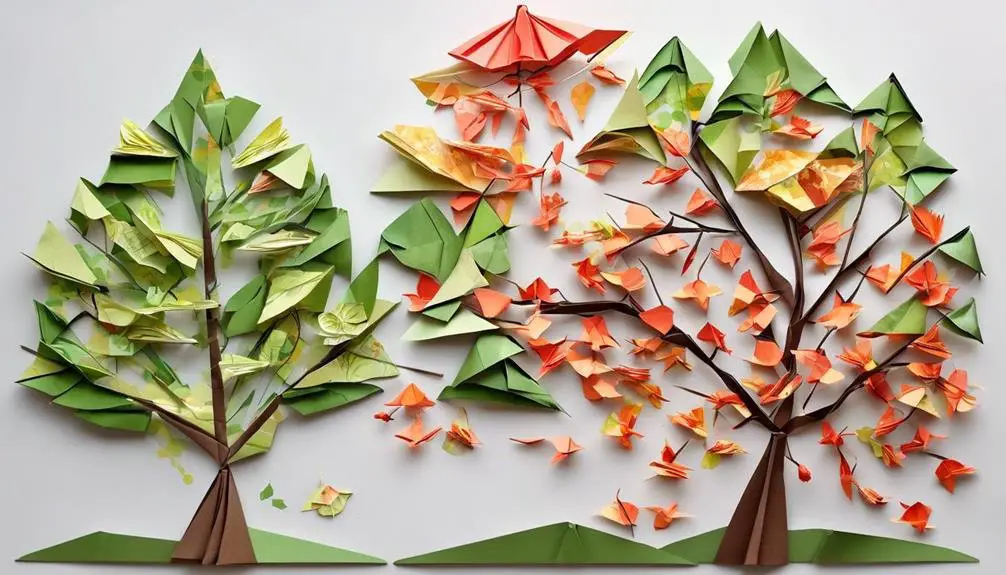
Many gardeners appreciate the versatility of crabapple trees, which offer a range of sizes from compact to dwarf, fitting even the smallest of gardens with ease. These trees are not only adaptable in terms of space but are also celebrated for their hardiness and growth characteristics. Modern breeding has enhanced their disease resistance, leading to a more robust tree that requires less maintenance, making them an attractive choice for both novice and experienced gardeners.
The growth and hardiness of crabapple trees can be characterized by several key points:
- Varied Sizes: They are available in sizes suitable for diverse spaces, from small urban gardens to larger landscapes.
- Disease Resistance: Improved varieties offer greater resistance to common tree diseases, reducing the need for chemical treatments.
- Year-Round Interest: These trees provide aesthetic value throughout all seasons with changing foliage and branch patterns.
- Wildlife Attraction: They serve as a natural habitat and food source for various bird species, contributing to local ecology.
- Maturity Timeline: The maturity of a crabapple tree typically takes 5 to 10 years, depending on environmental factors and care.
Culinary and Crafting Uses
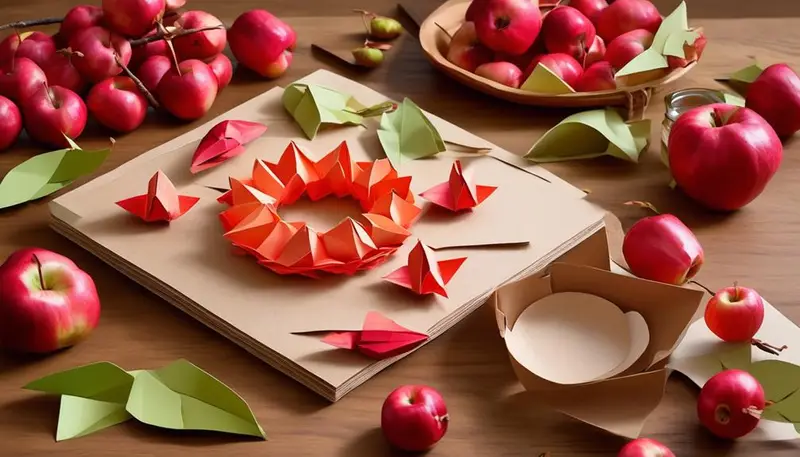
While often overlooked, crabapple trees offer a range of edible varieties that can be incorporated into an array of homemade culinary delights. These tart fruits are not only a vibrant addition to jams and jellies, but they also serve as a unique ingredient in various recipes, enriching them with distinct flavors and health benefits.
Beyond the kitchen, crabapples provide an artistic touch to decorative projects, showcasing the tree’s versatility both in and out of the culinary sphere.
Edible Crabapple Varieties
Edible crabapple varieties, renowned for their unique tartness, are highly versatile in culinary applications, ranging from jams and jellies to savory dishes, and also serve as an attractive option for crafting purposes.
These small, flavorful fruits provide a piquant kick to recipes, while their vibrant hues enhance the visual appeal of both edible creations and decorative crafts.
Noteworthy for their health benefits, these crabapples are a rich source of antioxidants, vitamins, and dietary fiber.
- Offer a tart flavor that can enhance a variety of dishes
- Ideal for making preserves like jams and jellies
- Can be used in savory recipes to add a tangy twist
- Suitable for decorative and crafting purposes due to their colorful appearance
- Attract wildlife, supporting biodiversity and pollination efforts
Homemade Crabapple Delicacies
Building on the versatility of edible crabapple varieties, homemade crabapple delicacies extend beyond the kitchen to include an array of crafting possibilities, each tapping into the fruit’s vibrant colors and distinct tartness. The small, piquant fruits inspire creations ranging from traditional preserves to decorative wreaths, showcasing their seasonal charm. As culinary ingredients, they yield a unique flavor profile, enhancing recipes both sweet and savory.
| Culinary Creation | Crafting Use |
|---|---|
| Crabapple Jelly | Wreath Accents |
| Spiced Crabapple Butter | Holiday Ornaments |
| Crabapple Chutney | Table Centerpieces |
| Pickled Crabapples | Dried Fruit Garlands |
| Crabapple Cider | Potpourri Mix-ins |
These uses demonstrate the crabapple’s dual role in both practical and ornamental domains, contributing to sustainable living and creative expression.
Crabapple Decorative Projects
Crabapple trees, with their vibrant blossoms and colorful fruit, not only enhance the beauty of landscapes but also offer versatile materials for a variety of decorative projects, combining culinary and crafting applications. These projects can range from edible treats to ornamental displays, showcasing the tree’s dual role in both aesthetics and functionality.
- Centerpieces and Wreaths: Utilize the bright, varied hues of crabapple blossoms and fruits to create stunning table centerpieces or decorative wreaths.
- Culinary Garnishes: Add a splash of color and a hint of tartness to dishes using crabapple slices as garnishes.
- Homemade Jams: Create distinctive, flavorful jams and jellies from the tart crabapple fruit.
- Bird Feeders: Incorporate crabapples into bird feeders to attract and nourish local wildlife.
- Craft Projects: Use dried crabapple branches and fruits for rustic craft projects, adding a natural element to home decor.
Conclusion
In summary, crabapple trees offer an appealing balance of ornamental beauty and ecological benefits, enhancing landscapes with vibrant blossoms and supporting local wildlife.
Despite the challenges of fruit litter and potential disease susceptibility, these trees remain a favored choice for their low maintenance and hardiness.
An interesting statistic to note is that over 35 species and countless cultivars of crabapple trees exist, showcasing the vast selection available for various landscaping needs.










